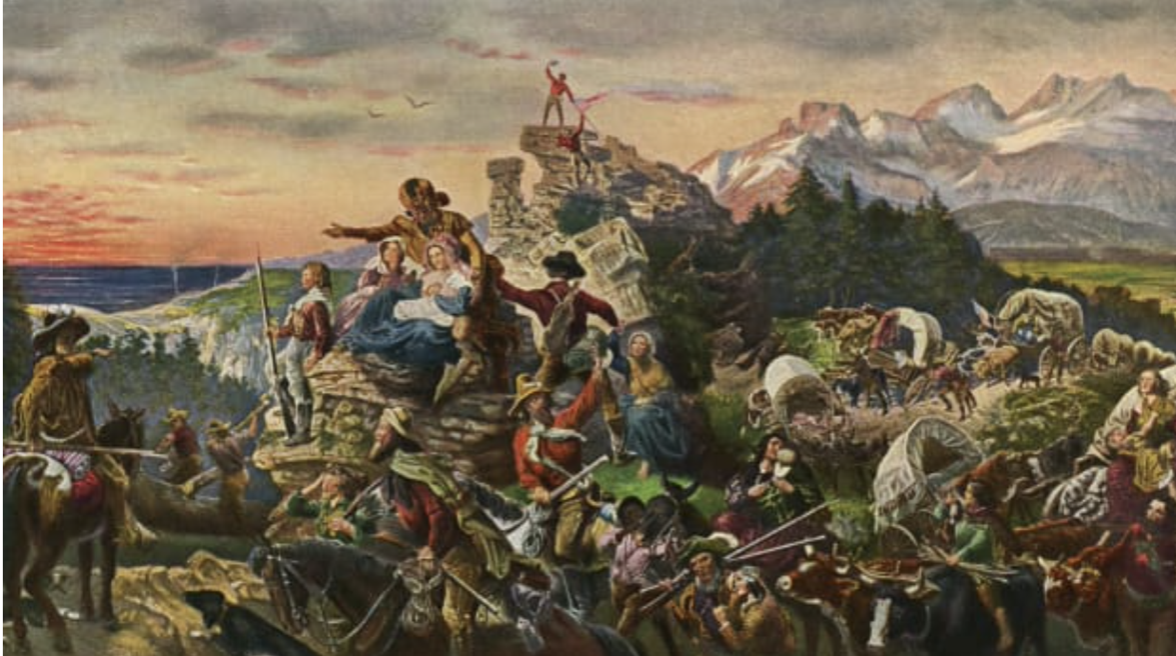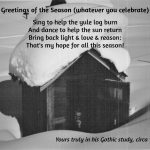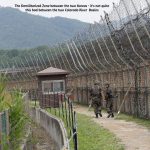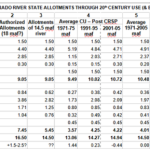
In the last post, I unabashedly advanced the hypothesis that most of what happened in the Colorado River region, over the past century and a half, might have been the consequence of a cultural microbe that spread through the system from the ‘fabled Hassayampa,’ an intermittent Colorado River tributary in Arizona: ‘of whose waters,’ according to desert writer Mary Austin, ‘if any drink, they can no more see fact as naked fact, but all radiant with the color of romance.’
This could explain many things, throughout the West, that seem inexplicable to Americans today, for whom the drinking water has been cleansed of all life including the Hassayampa bug, and who therefore cannot understand why or how earlier generations could have done what we have done with and to the River.
A ‘romance’ is not necessarily a love story, although it will always involve passionate feelings. The first book about the Colorado River and its modern history was Frederick Dellenbaugh’s The Romance of the Colorado River. He began the book with a general encomium to rivers, observing that ‘man, during all his wanderings in the struggle for subsistence, has universally found [the rivers] his friends and allies,’and described some of the ways in which rivers have been useful to humans. But then –
‘By contrast,’ he declared, ‘it is all the more remarkable to meet with one great river which is none of these helpful things, but which, on the contrary, is a veritable dragon, loud in its dangerous lair, defiant, fierce, opposing utility everywhere, refusing absolutely to be bridled by Commerce, perpetuating a wilderness, prohibiting mankind’s encroachments, and in its immediate tide presenting a formidable host of snarling waters whose angry roar, reverberating wildly league after league between giant rock-walls carved through the bowels of the earth, heralds the impossibility of human conquest and smothers hope.’
This romance is not a love story, at least not for Dellenbaugh, which is not to say he does not love the River; he loves it the way most humans love a good intriguing challenge. ‘Heralds the impossibility of human conquest and smothers hope’? The River has thrown down the gauntlet; Americans (including Dellenbaugh) lined up to pick up the gauntlet, to ‘romance the River.’
Dellenbaugh’s perception of the River of Color was probably due to his introduction to it, which was something of a ‘baptism under fire’ – or, more accurately and literally, a baptism under water: he met the River as a member of Major John Wesley Powell’s company on Powell’s second trip through the River’s canyon region. There was no fear on that trip of coming onto a waterfall impossible to survive with no way up the walls or back upriver, and they had better boats; but there were still a lot of soaking spills and thrills.
Most of Dellenbaugh’s Romance was his third-person account of Powell’s first trip through the canyons and his first-person account of the second trip, but he has little about Powell’s career after that – which is unfortunate because in the two decades following the second River trip, the one-armed Civil War vet with the wild beard did his most impressive work in trying to negotiate a marriage between the romance of the River and the ‘naked facts’ of the West, through the medium of science.
He came out of the second River trip with a federal job ‘surveying’ the arid lands with funding from Congress’s Geographical and Geological Survey. He joined an august company of other explorer-adventurers in that task, which was to map the West and catalog as thoroughly as possible its natural resources. Merriweather Lewis and John Clark, and the less celebrated Zebulon Pike, had trekked the Louisiana Purchase in the early 1800s; John C. Fremont was in the Mexican Cession before and after the 1848 treaty; John Gunnison and others in the 1850s were charged with finding suitable transcontinental railroad routes; and after the Civil War and its huge drawdown of industrial resources, Ferdinand Hayden, Clarence King and George Wheeler launched into a multi-year survey along the 40th Parallel and west of the 100th meridian, focusing on mineable resources.
The 100th Meridian is where the West begins, as distinguished from ‘Back East’ – a line drawn roughly from the middle of the Dakotas to the middle of Texas. It is where the humid eastern three-fifths of the continent segued into the subhumid and arid West – ‘The Great American Desert.’ It began with the subhumid (or semiarid) High Plains east of the Rockies, which receive 10-20 inches of precipitation annually, considered too little for dependable unirrigated agriculture. Then west of the Rockies came the arid region (<10 inches annually) – the Great Basin between the Rockies and the Sierras, and nearly all of the Colorado River Basin. The Great American Desert became Major Powell’s territory for the western surveys.
What was really going on with all this ‘surveying’? Officially, superficially, the surveyors were avatars of the new nation’s ‘Manifest Destiny,’ trumpeted by political carny-barkers like Colorado’s first territorial governor William Gilpin, who declaimed to the U.S. Senate that it was ‘the untransacted destiny of the American people to subdue the continent — to rush over this vast field to the Pacific Ocean — to animate the many hundred millions of its people, and to cheer them upward — to set the principle of self-government at work — to establish a new order in human affairs’ – et cetera.
Remember, though, the deeper contention going on in America’s westward expansion: the cultural conflict between those advancing the dominant city-based Industrial Revolution across the continent, and those trying to get to the unsettled places ahead of the Industrial Revolution with a grassroots community-based Agrarian Counterrevolution. (See the April 4 post titled ‘Westward the Curse of Empire.’)
Most of the surveys were launched on behalf of the Industrial Revolution that really took off during and after the Civil War. The development of new industrial fabrication and assembly procedures, and the enhanced power of fossil fuels on the production side were resulting in huge jumps in productivity; the creation and exploitation of limited-liability corporations on the financial side was facilitating new industrial organization and production on an unprecedented scale. More of everything from the natural world was needed, and explorers were sent out to find it, with the industrial developers and their ubiquitous railroads not far behind.
But Major Powell’s survey of the Great American Desert became – as one might expect – an exception, even a challenge, to that drive. He was a scientist who listened to his heart, and his heart was with the Agrarian Counterrevolution he had grown up in, moving around the Old Northwest Territory with his itinerant Methodist preacher father.
As a scientist, Powell saw that the agrarians – even the ones who had farming experience – did not understand a subhumid or arid landscape. They were serious romantics, putting their minds to work in service to what their hearts felt, but without the balancing discipline of science. Believing in their hearts in the manifest destiny the Gilpins preached, they came west to fulfill it despite the reports of a Great American Desert, accepting without question some hypotheses about ‘climate change’: rain would follow the plow, they were told, with moisture released from turned-over soil going to the heavens to rain back down on the cultivators. They hypothesized that smoke from the trains, or maybe electricity from the telegraph wires, would cause an increase in clouds and rain.
And for a couple decades after the war, these hypotheses even seemed to hold water, as it were. Rainfall in the High Plains was adequate for agriculture those years. But Major Powell was not fooled. His survey work had showed him enough of the natural history of the region to know that the agrarians were heading for disaster if they believed that just their Christian presence and hard work would somehow turn the arid West into something like the humid East. His observation of the work of the Mormons in the valley of the Great Salt Lake confirmed his conviction that the arid and subhumid lands could only be made dependably productive through irrigation.
In 1878 he came out with a ‘Report on the Lands of the Arid Region of the United States’ that went beyond the typical survey mapping and cataloging of resources. In his report he basically laid out a somewhat detailed plan for how the Agrarian Counterrevolution could work in the arid region – including sample bills for Congress.
He challenged the Homestead Act with its one-size-fits-all 160-acre homesteads, arguing that 160 acres was too much for a family attempting an irrigated farm, and way too little for a rancher wanting to run livestock on unirrigated land. He also challenged the ideal of the individualistic Jeffersonian yeoman coming with his family alone into the wilderness and subduing it; he believed it took a communal effort to establish a good irrigation system in the arid lands. He also tried to point out how little water there really was; even with the most efficient irrigation systems, he calculated, there was only enough water to irrigate a tiny fraction of the arid West.
His ‘Report” was generally ignored, but he was not discouraged. In 1879 he collaborated in the creation of a more formal U.S. Geological Survey, a science-based organization for ‘classification of the public lands, and examination of the geological structure, mineral resources, and products of the national domain.’ As a government service, the USGS was not opposed to romantic visions; its objective was just to get all visions grounded in the ‘naked facts.’
In 1881 he became director of the USGS, and began to try to persuade Congress to let him do a thorough western survey mapping all streams and rivers, and identifying all potential ‘irrigation districts,’ all unirrigable ‘pasturage districts’ (for raising livestock), and all water storage sites, so the region could be settled in an intelligent and efficient way. He kept his request reasonable: let’s just find out what we have before we dribble it all away.
Nature kicked in to support his request; a brutal winter in 1886 was followed by a decade of drier years, which effectively laid to rest the hypotheses that settlement and cultivation were changing the climate favorably. By 1890, all of the agrarians were convinced that irrigation was the only way to go in the arid lands, and in 1888 Congress actually approved his massive survey of the West’s water resources – and going overboard, amended a funding bill to essentially shut down all western development until the survey was done.
That was a step too far; once Congress realized that following Powell’s suggestions had shut down the American growth machine for (Powell said) six or seven years for the survey, they immediately reversed themselves, cancelling the survey, and taking out their anger on Powell, doing everything they could to end his tenure in govrnment. He continued as director of the USGS, but he was given next to no funding.
Meanwhile, the agrarian advocates for irrigation began holding National Irrigation Congresses, with hundreds of attendees in public meetings more like revivals than scientific gatherings – a perception reinforced by journalist and chief organizer William Smythe, who proclaimed that irrigation was ‘not merely a matter of ditches and acres, but a philosophy, a religion, and a programme of practical statesmanship rolled in to one.’
Major Powell realized that, while the agrarians had all accepted the necessity of irrigation in the arid lands, they still had not fully understood that the essence of aridity was too little water. Invited to the second Irrigation Congress in 1893, in Los Angeles, despite his defenestration by the United States Congress, he again tried to warn the 700 attendees that there was not enough water for the 600 million acres they proposed to make bloom like the biblical rose.
‘I tell you, gentlemen,’ he said, ‘you are piling up a heritage of conflict and litigation over water rights, for there is not sufficient water to supply these lands!’
The crowd – the people whose romantic vision he had spent decades trying to realize through confronting the ‘naked facts’ of the West – booed him off the stage.
The next year, he resigned from the USGS, worried that he had become a liability to his own vision. In the sum, two out of three homesteads had failed by the 1930s. And throughout the River basin, the arid West in general, the heritage the Major predicted is still playing out today. The Major died in 1902 – too much a gentleman to ever say I told you so.
All romances do not have happy endings – although to be a tragedy, the players have to have learned something about themselves, even though it is too late; otherwise it is just another unexamined travesty, blame to be laid elsewhere. Next time – taking on the River’s challenge….
Photo caption:
They lived on a little-known continent, but they did not know
how little they knew. Yet if they had known more
they might have dared less. Their enterprises were stirred by
misinformation, fable, wild hopes, and unjustified certainties.– Daniel J. Boorstin, The Americans




I enjoyed the post and especially the use of the word defenestration in regard to Powell’s treatment by Congress. Of course defenestration or tossing someone out a window, usually a despot, duke or king happened via the anger of an unruly crowd. That rabble was Congress. How fitting. And he never told them, “I told you so.”
Very good. Can you mail a copy of this to every Californian, Arizonian and politician. I have a chapter in the book I’m writing about this and will include its essence..
Great story George. We are still magically trying to provide water from arid landscape.
This is a fascinating perspective. I have even lifted some of your verbiage for the ditch outline.
George,
I left a comment after I first read the article above. Because of problems with my email I think it didn’t go. Since then I have read this piece two more times and each time it feels like the first time. You have so many thoughts and perspectives here that are incredibly profound like this.
“But Major Powell was not fooled. His survey work had showed him enough of the natural history of the region to know that the agrarians were heading for disaster if they believed that just their Christian presence and hard work would somehow turn the arid West into something like the humid East. His observation of the work of the Mormons in the valley of the Great Salt Lake confirmed his conviction that the arid and subhumid lands could only be made dependably productive through irrigation.”
And then there is this paragraph which is a work of genius leaving me to think that our film should be called crifasi meets sibley at the 100th meridian.
Meanwhile, the agrarian advocates for irrigation began holding National Irrigation Congresses, with hundreds of attendees in public meetings more like revivals than scientific gatherings – a perception reinforced by journalist and chief organizer William Smythe, who proclaimed that irrigation was ‘not merely a matter of ditches and acres, but a philosophy, a religion, and a programme of practical statesmanship rolled in to one.’
Anyway, I have really enjoyed reading this and have many more thoughts about how crifasi’s film should be framed. Look forward to talking on the 2nd.
Len